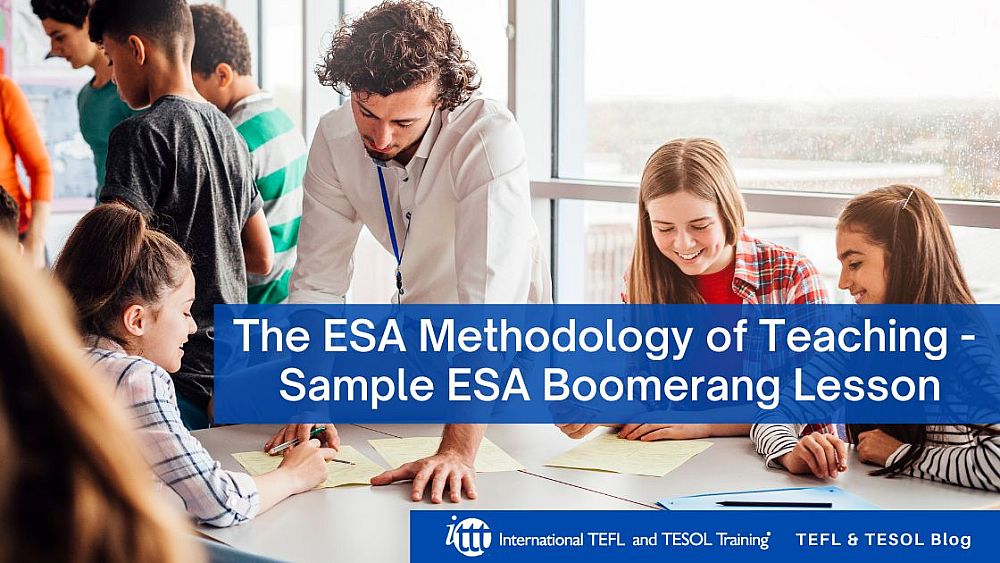The ESA Methodology of Teaching - Sample ESA Boomerang Lesson

In this blog post, we will take a look at a typical example of a boomerang lesson.
Table of Contents
Watch the video about this topic
We start with an engage phase.
Are you ready to teach English as a foreign language?
Check out what our course grads say in our many video testimonials!
Watch the video about this topic
First we will recap the structure E ïƒ A1 ïƒ S ïƒ A2
We start with an engage phase.
Here the students are just going to have a discussion about jobs, what happens at interviews and so on and so forth. During that engage phase what we would hope to do is to elicit some useful language about, jobs, interviews and the types of questions that are being asked in interviews. Some of this information can be put on the board. We do no teaching in this phase, we do not correct any mistakes either, just let the students talk freely.
Next, we're going to move immediately into an activate activity and this is going to involve a role-play. We will put the students into pairs, one will be an interviewer the other will be an interviewee. They will generate some language that that role-play is designed to produce.
During the activity the teacher can go around and make a note of any mistakes in either vocabulary or grammar that are taking place. As the students have not studied this language they are going to find it quite difficult. However this will show them that there is a gap in their knowledge.
Moving on to the study phase and beginning that with the boardwork. Taking your cue from what happened in the role-play; we can now study that particular language and grammar which was lacking, so the students will cover any useful language and grammar needed for that role-play. Once we have studied that language and grammar, we can then do some worksheets. Those worksheets will be to check their understanding of that particular language and grammar point.
Finally we can repeat the role-play as our final activate activity, perhaps swap around the interviewer and the interviewee so they get to play a different part. What they should now be able to do is to make use of the language in grammar in their second role-play. This will hopefully show the students, that the gap in their knowledge from the first activate has been overcome and that they can now use that language in their second one.
So a boomerang ESA lesson is very good for indicating a learning need and showing that that learning need has been covered. As the process is very specific and we are expecting students to struggle in A1, we should only use this structure with Pre-Intermediate and above. The reason for this is that the students need a good enough understanding of English so that we can explain the process to them. If they don't know what is happening, we risk them losing confidence by doing an activity they are unable to do properly. (A1).
Are you ready to teach English as a foreign language?
Apply now & get certified to teach english abroad!
Speak with an ITTT advisor today to put together your personal plan for teaching English abroad!
Send us an email or call us toll-free at 1-800-490-0531 to speak with an ITTT advisor today.
Related Articles:
- Top 10 Cities in Europe with the Highest Demand for English Language Teachers
- 5 Reasons To Take A TEFL Course Right Now - Even If You Are Not Leaving Yet | ITTT | TEFL Blog
- All the Documents You Will Need to Teach English Abroad
- The Impact of Positive Motivation on an ESL Classroom
- You're Never Too Old to Change Your Life and Do a TEFL Course | ITTT | TEFL Blog
- Getting Student Placement Right - The Best Desk Arrangements for EFL Students



